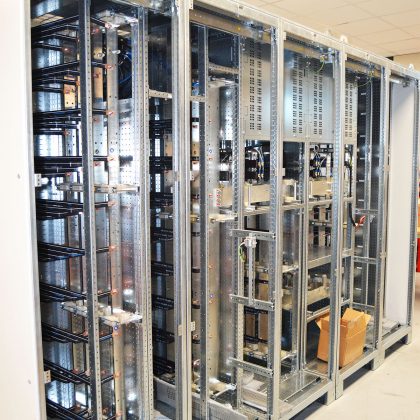In today’s rapidly evolving energy landscape, maintaining grid stability and efficiency is paramount for reliable power supply. Medium voltage electrical cabins play a crucial role in achieving these objectives, acting as the backbone of electrical distribution systems. Typically operating within voltage ranges of 1 kV to 36 kV, these cabins serve as essential hubs for managing electricity distribution, ensuring that power is delivered safely and effectively from substations to end users. One of the primary advantages of medium voltage electrical cabins is their ability to enhance grid reliability. By consolidating multiple functions, such as protection, control, and metering, these cabins provide a centralized point for managing electrical distribution. This design minimizes the risk of faults and improves response times in the event of outages. Advanced technologies, such as smart grid solutions, can be integrated into these cabins, allowing for real-time monitoring and management of power flow. This capability enables utilities to quickly identify issues, reroute power, and minimize downtime, ultimately improving the overall reliability of the grid.

Furthermore, medium voltage electrical cabins contribute to grid efficiency by optimizing energy use. With the increasing integration of renewable energy sources, such as wind and solar power, the demand for flexible and efficient distribution systems has grown. Medium voltage cabins facilitate this transition by providing the necessary infrastructure for managing intermittent power sources. They can be equipped with energy storage systems, allowing excess energy generated during peak production periods to be stored and used during high-demand times. This not only enhances efficiency but also supports the stability of the grid by balancing supply and demand. Additionally, medium voltage cabins can be designed to incorporate advanced technologies that enhance grid performance. For instance, implementing automated systems and smart devices can improve load management and reduce transmission losses.
By employing sensors and communication technologies, utilities can gather valuable data on energy consumption patterns, enabling more informed decision-making regarding load distribution and infrastructure investments. Moreover, the normativa cabine elettriche mt/bt modular nature of medium voltage electrical cabins allows for scalability and adaptability. As energy demands fluctuate and technologies evolve, these cabins can be easily upgraded or expanded to meet new requirements. This flexibility is essential for modern power systems, which must continually adapt to changing energy landscapes and regulatory frameworks. Medium voltage electrical cabins are integral to enhancing grid stability and efficiency. Their centralized management capabilities, support for renewable energy integration, advanced technologies, and scalability make them indispensable assets in the quest for a reliable and efficient power grid. As the energy sector continues to evolve, investing in medium voltage infrastructure will be vital for ensuring a resilient and sustainable energy future.
